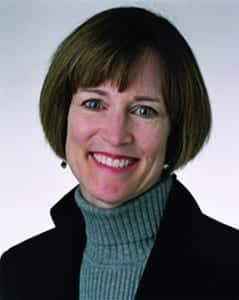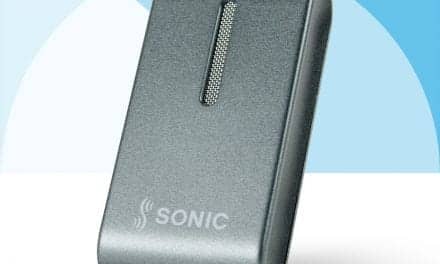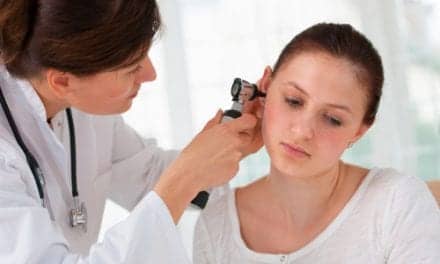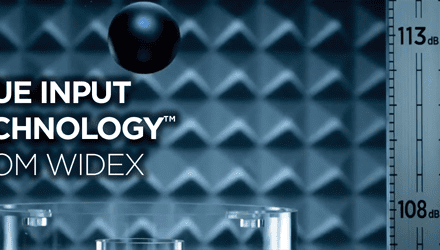SPECIAL ISSUE: Unilateral Hearing Loss | October 2019 Hearing Review
A brief review of the literature about UHL in children and management options
It is now indisputable that we have sufficient data from academic and laboratory settings, parents, teachers, and children with UHL themselves to support the concept that these losses put children at risk for psychoeducational and related difficulties.
For the last several decades, there has been a steady accumulation of knowledge about the impact of unilateral hearing loss (UHL) on children.1–3 One of the early studies that is credited with initiating this surge of research revealed that children with permanent UHL are significantly more likely to have academic and behavioral difficulties than their normal-hearing peers.1,4,5 Since those early publications, numerous other studies around the globe have resulted in similar findings,3,6-8 thus confirming the academic risk faced by children with UHL. In fact, evidence now exists that in addition to general academic difficulties (ie, grade retention, need for resource assistance), children with UHL are at greater risk than their normal-hearing peers for difficulties with speech and language,3,9 balance,10 and cognition.3,9 In fact, approximately 50% of children with UHL have academic difficulties of some type requiring tutoring or therapy.
This article seeks to update our understanding of the psychoeducational and related outcomes for children with UHL.
Definition, Prevalence, and Identification of UHL
It is important to note that UHL varies widely in degree and configuration across children. Specifically, UHL has been defined as any degree of hearing loss in the impaired ear with average air-conduction thresholds in the normal-hearing ear ≤15 dB HL. More recently, profound unilateral hearing loss has been referred to as single-sided deafness (SSD), which is a non-audiologic term that emerged in recent years.11 The term suggests either a profound degree of hearing loss in one ear and/or very poor speech perception ability, thus rendering that ear of limited use. For purposes of this discussion, the term UHL will be used exclusively to represent all degrees of UHL unless otherwise noted.
Early studies revealed that most children with UHL were identified at approximately 4 to 6 years of age, or upon school entry.1 Today, about 97% of babies born in the United States are screened for hearing loss at birth and, of those screened, approximately 1 per 1000 are diagnosed with UHL12; this accounts for about 43% of children with UHL being identified prior to 6 months of age.13 By the time children reach school age, the prevalence increases to approximately 3 to 6 per 100,14,15 and 14 per 100 by adolescence.15
There are a number of possible explanations for this increase in prevalence between the newborn period and school age, including progression or late onset of hearing loss, and the non-detection of minimal or mild degrees of UHL as newborn screening programs are not designed to detect such losses.16 Therefore, it is incumbent upon audiologists to educate pediatricians and other professionals about this limitation in newborn hearing screening protocols so they can remain vigilant and attentive to parental concerns, and provide additional hearing screenings after the newborn period, when indicated.17
The cause of UHL remains largely idiopathic. In 31–54% of children with UHL, no risk or associated factors are identified.13,18 Cochlear malformations, including enlarged vestibular aqueduct (EVA), are the most common associated factors of UHL.19-21 EVA is of particular interest because the associated UHL can progress to bilateral hearing loss even when the EVA is unilateral.22 To a lesser extent, teratogens such as cytomegalovirus23 have been implicated in UHL. As of this writing, no genetic links to UHL have been identified.
Collectively, reports indicate that UHL progresses to bilateral hearing loss in about 7% to 11% of cases23,24; thus, it is critical to monitor the hearing of those with UHL on a systematic basis. Identifying the etiologies of these losses can assist in determining a prognosis for progression and, thus, inform management schedules.
Psychoeducational and Related Implications of UHL
The immediate impact of UHL is a loss of binaural function resulting in difficulty with sound localization25,26 and speech perception in background noise.4,27 The loss of interaural time and level differences can result in a safety concern for young children with UHL who need those cues for learning to navigate street crossings or walking through busy parking lots. In addition, the inability to identify the source of a speaker quickly can delay access to important visual cues that enhance speech perception. Furthermore, the absence of binaural cues, such as binaural squelch, can negatively impact the ability to understand speech in the presence of background noise, potentially impacting language and learning, as well as interrupting social interactions.
As noted previously, early in the 1980s and 1990s, there were a number of research studies published that revealed approximately 50% of children with UHL either failed a grade in school or required resource assistance; that is, they were approximately 10 times more likely than their normal-hearing peers to be academically unsuccessful.1,6,14 These early studies prompted additional work that corroborated those findings.2,3,28 Furthermore, the greater the degree of UHL, the more likely the child is to have listening and educational difficulties.1,27,29 Several investigators have found that right-ear impairment is more detrimental to academic achievement than left-ear impairment,1,6,8 although some studies have found no ear-specific differences on language measures.30
Evidence is mounting to suggest that children with bilateral hearing loss might exert more effort to compensate for their listening difficulties than children with normal hearing, and such listening effort can lead to listening-related fatigue.31-33 Although there are limited data addressing listening effort and fatigue specifically in children with UHL, Hornsby and colleagues34 found higher rates of self-reported fatigue in children who had a range of hearing loss compared to children with normal hearing, but there was no association between degree of hearing loss and fatigue ratings. Thus, it is reasonable to expect that children with UHL would also be susceptible to listening-related fatigue. To the extent that this is true, children who exert sustained listening effort in a classroom setting might have less energy available for other academic tasks, such as formulating questions and answers, taking accurate notes, and so on. Work is ongoing to understand the relationship between listening-related fatigue and academic outcomes in children with UHL.33
Management Options
In addition to numerous hearing technology options designed to assist with listening needs, there are several other management possibilities for children with UHL. A recent consensus statement35 recommends the use of functional surveys or questionnaires to identify and assess specific risk areas of concern such as localization ability (eg, Speech Spatial and Qualities of Hearing questionnaire; SSQ parent and child versions)36; listening difficulties (eg, Early Listening Function [ELF])37,38; auditory behaviors (eg, LittlEARS Auditory Questionnaire (LEAQ)39; and educational achievement (eg, Screening Instrument for Targeting Educational Risk (SIFTER).38,40 An additional tool, the Vanderbilt Fatigue Scale (VFS)32 will soon be available for measuring listening-related fatigue in children—an area of growing interest for those managing children with hearing loss.
Although we must be cautious about the possible presence and impact of listening-related fatigue in children with UHL given the limited data available at this time, it remains an area of interest deserving of continued research.
Final Words
It is now indisputable that we have sufficient data from academic and laboratory settings, parents, teachers, and children with UHL themselves to support the concept that these losses put children at risk for psychoeducational and related difficulties. However, we still cannot predict which children with UHL will have such problems, or which management approaches might best assist them with their listening and learning problems.
Additionally, we do not know exactly why UHL results in academic risk for children. There are a number of potential contributing stressors for children, including lack of early identification, lack of early and consistent intervention, adverse listening conditions, increased listening effort and subsequent fatigue, concomitant otitis media resulting in a conductive overlay for one or both ears, and etiology. At this time, we must use the tools at our disposal described previously to identify individual needs of children on a case-by-case basis.35
There remains much work to be done to optimize our management of children with UHL. Specifically, there is a need to compare effectiveness of existing and emerging hearing technologies, determine what degrees of UHL are aidable with conventional hearing aids, determine what predicts “success” with various interventions, and enlarge our study cohorts by utilizing multisite designs and big data resources.35
To conclude, we have come a long way in the last several decades towards understanding the risks associated with UHL in children. However, we are overdue in gaining an understanding of optimum, individual management approaches. It is time for renewed research focus on UHL in children with an emphasis on optimizing management and outcomes.
References
-
Bess FH, Tharpe AM. Case history data on unilaterally hearing-impaired children. Ear Hear. 1986;7(1):14-19.
-
Lieu J. Speech-language and educational consequences of unilateral hearing loss in children. Arch Otolaryngol-Head Neck Surg. 2004;130(5):524-530.
-
Lieu JE. Unilateral hearing loss in children: Speech-language and school performance. B-ENT Suppl. 2013;21: 107-115.
-
Bess FH, Tharpe AM, Gibler AM. Auditory performance of children with unilateral sensorineural hearing impairment. Ear Hear. 1986;7:20-26.
-
Culbertson JL, Gilbert LE. Children with unilateral sensorineural hearing loss: cognitive, academic, & social development. Ear Hear. 1986;7:38-42.
-
Oyler R, Oyler AL, Matkin N. Unilateral hearing loss: Demographics and educational impact. Language and Speech Hearing Services in Schools. 1998;19(2):201-210.
-
Bovo RA, Martini M, Agnoletto A, Beghi D, Carmignoto M, Milani M, Zangaglia AM. Auditory and academic performance of children with unilateral hearing loss. Scand Audiol. 1988;[Suppl 1]30:71-74.
-
Jensen J, Børre S, Johansen P. Unilateral sensorineural hearing loss in children and auditory performance with respect to right/left ear differences. Brit J Audiol. 1989;23(3):207-213.
-
Ead B, Hale S, DeAlwis D, Lieu JEC. Pilot study of cognition in children with unilateral hearing loss. Int J Pediatr Otorhinolaryngol. 2013;77(11):1856-1860.
-
Wolter NE, Cushing SL, Vilchez-Madrigal LD, James AL, Campos J, Papsin BC, Gordon KA. Unilateral hearing loss is associated with impaired balance in children: A pilot study. Otol Neurotol. 2016;(37):1589-1591.
-
Cire G. Understanding single sided deafness: Evaluation and treatment for professionals. August 1, 2002. Available at: https://www.audiologyonline.com/articles/understanding-single-sided-deafness-evaluation-6829
-
Centers for Disease Control and Prevention. 2012 Annual data early hearing detection and intervention (EHDI) program. April 2014. Available at: http://www.cdc.gov/ncbddd/hearingloss/2012-data/2012_type_asha_web.pdf
-
Ghogomu N, Umansky A, Lieu JE. Epidemiology of unilateral sensorineural hearing loss with universal newborn hearing screening. Laryngoscope. 2014;124(1): 295-300.
-
Bess FH, Dodd-Murphy J, Parker, RA. Children with minimal sensorineural hearing loss: Prevalence, educational performance, and functional status. Ear Hear. 1998;19:339-354.
-
Shargorodsky J, Cerhan SG, Curhan GC, Eavey R. Change in prevalence of hearing loss in US adolescents. J Am Med Assoc. 2010;304(7): 772-778.
-
Joint Committee on Infant Hearing (JCIH). Year 2007 Position Statement: Principles and guidelines for early hearing detection and intervention programs. Pediatrics. 2007;120(4), 898-921.
-
American Academy of Pediatrics. Recommendations for preventive pediatric health care. Available at: www.aap.org/en-us/professional-resources/practice-support/Pages/PeriodicitySchedule.aspx.
-
Declau F, Boudewyns A, Van den Ende J, Peeters A, van den Heyning, P. Etiologic and audiologic evaluations after universal neonatal hearing screening: Analysis of 170 referred neonates. Pediatrics. 2008;121(6):1119-1126.
-
Clemmens C. Guidi SJ, Caroff A. Unilateral cochlear nerve deficiency in children. Otolaryngol Head Neck Surg. 2013;149(2):318-325.
-
Nakano A, Arimoto Y, Matsunaga T. Cochlear nerve deficiency and associated clinical features in patients with bilateral and unilateral hearing loss. Otol Neurotol. 2013;34(3):554-558.
-
Fitzpatrick EM, Al-Essa RS, Whittingham J, Fitzpatrick J. Characteristics of children with unilateral hearing loss. Int J Audiol. 2017;56(11):819-828.
-
Greinwald J, DeAlarcon A, Cohen A, Uwiera T, Zhang K, Benton C, Halstead M, Meinzen-Derr J. Significance of unilateral enlarged vestibular aqueduct. Laryngoscope. 2013;123(6):1537-46.
-
Paul A, Marlin S, Parodi M, Rouillon I, Guerlain J, Pingault V, Couloigner V, Garabedian EN, Denovelle F, Loundon N. Unilateral sensorineural hearing loss: Medical context and etiology. Audiol Neurotol. 2017;22:83-88.
-
Haffey T, Fowler N, Anne S. Evaluation of unilateral sensorineural hearing loss in the pediatric patient. Int J Ped Otorhinolaryngol. 2013;77:955-958.
-
Humes LE, Allen SK, Bess FH. Horizontal sound localization skills of unilaterally hearing-impaired children. Audiology. 1980;19(6):508-518.
-
Johnstone PM, Nabelek AK, Robertson VS. Sound localization acuity in children with unilateral hearing loss who wear a hearing aid in the impaired ear. J Am Acad Audiol. 2010;21(8), 522-534.
-
Ruscetta M, Arjmand E, Pratt S. Speech recognition abilities in noise for children with severe-to-profound unilateral hearing impairment. Int J Pediatr Otorhinolaryngol. 2005;69(6), 771-779.
-
Fitzpatrick EM, Gaboury I, Durieux-Smith A, Coyle D, Whittingham J, Nassrallah F. Auditory and language outcomes in children with unilateral hearing loss. Hear Research. 2019;372, 42-51.
-
Rothpletz AM, Wightman FL, Kistler DJ. Informational masking and spatial hearing in listeners with and without unilateral hearing loss. J Sp Lang Hear Res. 2012;55(2):511-531.
-
Lieu JE, Tye-Murray N, Karzon RK, Piccirillo JF. Unilateral hearing loss is associated with worse speech-language scores in children. Pediatrics. 2010;125(6)[Jun]:e1348-55. doi: 10.1542/peds.2009-2448.
-
Hicks CB, Tharpe AM. Listening effort and fatigue in school-age children with and without hearing loss. J Speech Lang Hear Res. 2002;45, 573–584.
-
Hornsby BW, Davis H, Cho S, Bess FH. Using the Vanderbilt Fatigue Scales to explore the effect of hearing loss and device use on listening-related fatigue in adults and children with hearing loss. Paper presented at: International Hearing Aid Research Conference, Lake Tahoe, Calif; 2018.
-
Bess FH, Davis H, Camarata S, Hornsby BWY. Listening-related fatigue in children with unilateral hearing loss. Language, Speech, and Hearing Services in Schools. In press.
-
Hornsby BWY. Gustafson SJ, Lancaster H, Cho SJ, Camarata S, Bess FH. Subjective fatigue in children with hearing loss assessed using self- and parent-proxy report. Am J Audiol. 2017 Oct;12;26(3S):393-407.
-
Bagatto MP, DesGeorges J, King A, Kitterick P, Laurnagaray D, Lewis D, Roush P, Sladen DP, Tharpe, AM. Consensus practice parameter: Audiological assessment and management of unilateral hearing loss in children. Int J Audiol. In press.
-
Galvin KL, Noble W. The speech, spatial and qualities of hearing scale for use with children, parents, and teachers. Cochlear Implants International. 2004;14(3):135-141.
-
Anderson KL. Early Listening Function (ELF). 2002. Available at: http://home.earthlink.net/~karenlanderson/ELF.html
-
Anderson KL. Parent involvement: The magic ingredient in successful child outcomes. Hearing Review. 2002;9(11)[Nov]:24-27,56.
-
Kuhn-Inacker H, Weichbold L, Tsiakpini L, Corinx F, D’Haese P. LittEARS Auditory Questionnaire. Innsbrook, Austria: MED-EL;2003.
-
Anderson KL. SIFTER: Screening Identification For Targeting Educational Risk. In: Children Identified by Hearing Screening or Who Have Known Hearing Loss User’s Manual. The Educational Audiology Association;1989. Available at: https://msu.edu/course/asc/823e/casby/screening/sifter.pdf
About the author: Anne Marie Tharpe, PhD, is a Professor and Chair of the Department of Hearing & Speech Sciences Vanderbilt University Medical Center and Associate Director of the Vanderbilt Bill Wilkerson Center in Nashville, Tenn. As a leading expert in pediatric hearing loss, her and Richard Seewald’s book, Comprehensive Handbook of Pediatric Audiology (Plural Publishing, 2017), is now in its second edition and has become one of the seminal textbooks on hearing loss in children.
Correspondence can be addressed to HR or Dr Tharpe at: [email protected]
Citation for this article: Tharpe AM. Unilateral hearing loss in children: Current perspectives. Hearing Review. 2019;26(10)[Oct]:18-21.
Other articles in the October 2019 Hearing Review special edition on unilateral hearing loss:
- Introduction to Special Edition: Unilateral Hearing Loss: Underappreciated, Undertreated, By Karl Strom
- Contralateral Routing of Signal: A Status Report 2019, By Douglas L. Beck, AuD, and Virginia Ramachandran, AuD, PhD
- Unilateral Hearing Loss in Children: Current Perspectives, By Anne Marie Tharpe, PhD
- A New Dual-Streaming CROS/BiCROS Solution, By Susanna Løve Callaway, AuD, and Pernille Aaby Gade
- Managing People with Sensorineural and Conductive Unilateral Hearing Loss and Single-Sided Deafness, By Amanda O’Donnell, AuD, and Allison Racey, AuD
Also see:
- The Impact of Unilateral Hearing Loss on Adult Life, By James Galloway, MSc; Vicky Zhang, PhD; Vivienne Marnane; Sanna Hou, MClinAud; Greg Stewart, and Fabrice Bardy, PhD
Image: © Krishnacreations – Dreamstime.com





